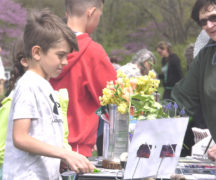By JAN McLAUGHLIN
BG Independent News
With each passing year, Earth Day messages are becoming more mainstream. Children understand the need to protect the planet. College students no longer have blank stares when talking about invasive species. And adults expect their communities to offer green options.
“I think the message is coming through,” Cinda Stutzman, Bowling Green’s natural resources manager, said as she staffed a table at the annual Earth Day celebration Sunday on the grounds of the Montessori School in Bowling Green.
With the main focus on children, the event featured several hands-on learning stations. At Stutzman’s table it was all about toads and frogs.
With high pitched trills and deep throated croaks in the background, Stutzman marveled at the different types of frogs and toads populating Wintergarden Woods in Bowling Green.
“For such tiny creatures, they make so much sound,” Stutzman said.
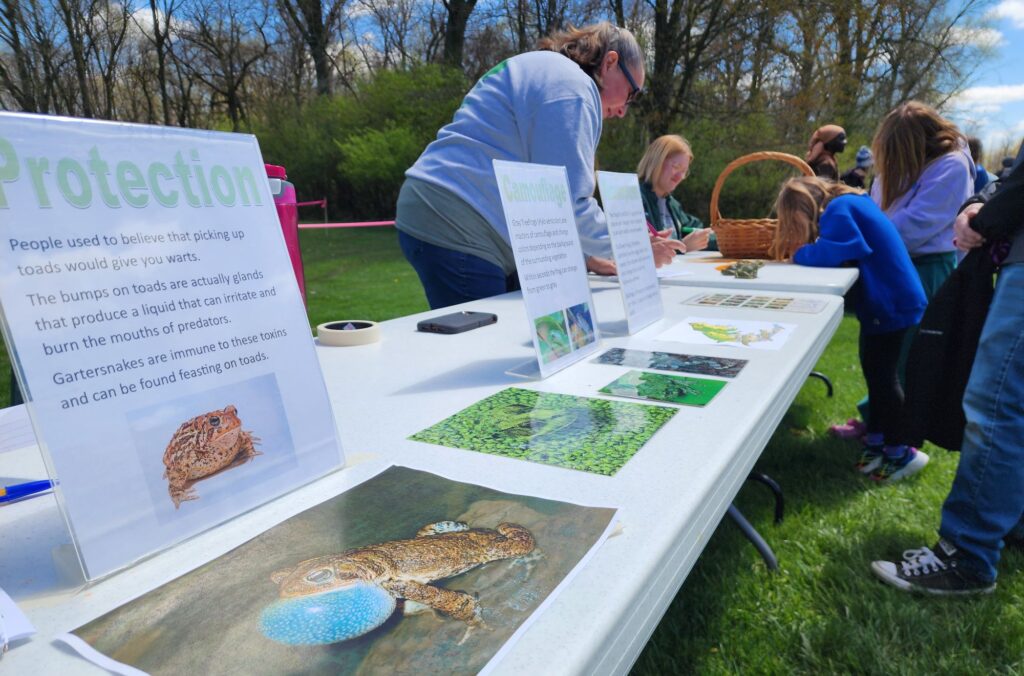
“He’s obviously making a blue-spotted frog,” she said of a boy coloring a frog picture, going heavy on the blue.
While Bowling Green isn’t home to any variety of blue frogs, it is the residence of six of the 16 varieties found in Ohio – including the American toad, leopard frog, chorus frog, green frog, gray tree frog, and bullfrog.
And yes, tree frogs are aptly named. “They really do climb trees,” Stutzman said.
Stutzman invited visitors to the city parks to hear nightly croaking concerts.
“Come to the parks in the evening when the sun is setting,” she said. While one frog can make a lot of noise, “put five of them together and it’s really loud.”
Tales have passed down over the years about the volume of the small amphibians when this area was still a swamp.
“I’ve heard it used to be deafening in the Great Black Swamp days,” Stutzman said.
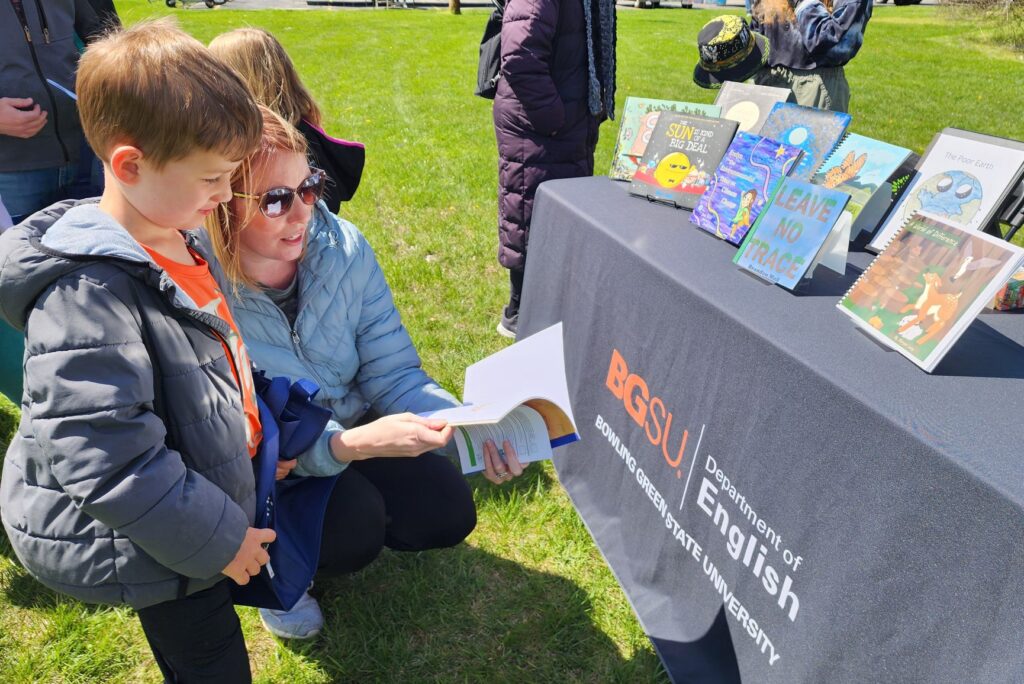
Nowadays, students learn early about environmental issues – at school, at city park programs, and in books.
“Parents are encouraging environmental literacy,” Stutzman said. “Change is slow, but in 20 years, we’ve seen a lot of changes.”
Bowling Green Communications Director Amanda Gamby has also noticed the trend. Many of the young parents today learned about environmental issues in school.
“I’ve seen a huge shift,” she said. “It’s become so commonplace in schools in the last 15 years.”
City residents expect renewable energy sources, sustainability programs, and recycling.
At Sunday’s Earth Day event, Gamby was talking to participants about the need to not put items into the city’s stormwater drains. In places where there are no combined sewers, the stormwater – plus whatever is thrown in – goes straight to a waterway.
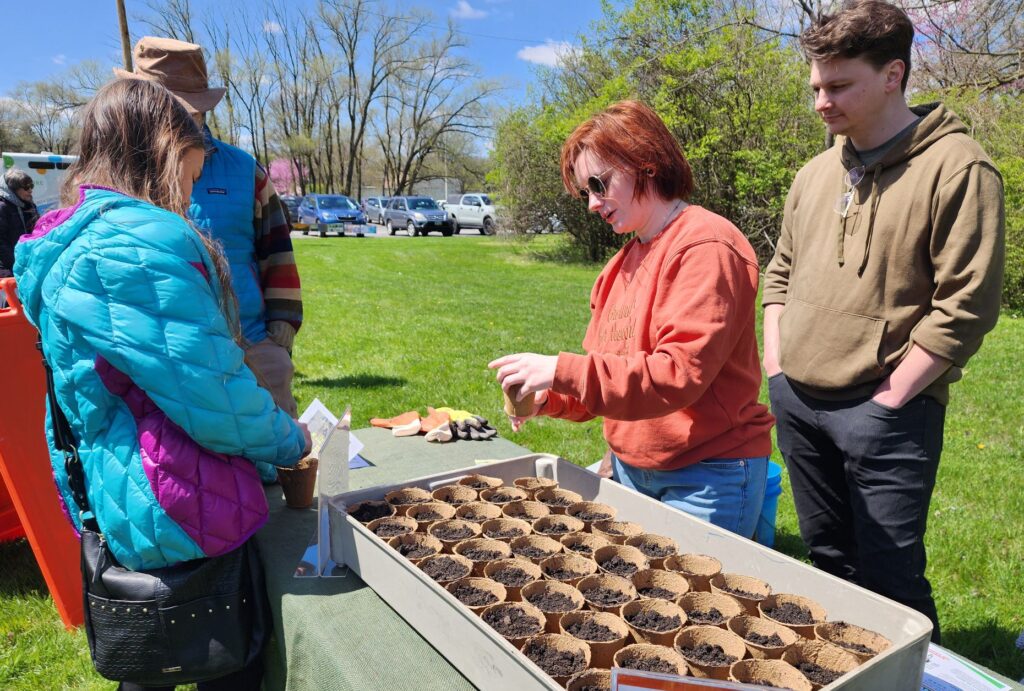
City Arborist Adrien Lowien-Kirian has also seen environmental issues becoming more mainstream and no longer considered on the fringe. When she first went into an environmental line of work, she was a rarity.
“There were a handful of women,” Lowien-Kirian said. “Now half of them are women.”
Kaitlan Sewell, advancement director of the Montessori School, has also noticed enthusiasm among youth to make a difference in the environment. Green education and conservation are part of “educating the whole child,” she said.
“Our kids are all about it,” and looking for solutions they can be part of, Sewell said.
At the Earth Day celebration, kids were invited to plant a sunflower with BGSU, learn about recycling and food waste, learn about trees with the city’s arborist, and give the Wood County Park District’s giant Earth Ball a roll.
Interactive games were provided by the Wood County Solid Waste District, Northwestern Water & Sewer District, and others. The Wood County District Public Library was there with an Earth Day Storybook Walk, and the Ohio EPA, Wood County Health Department, Center for Food and Culture, and Montessori School of Bowling Green hosted hands-on learning stations.
Participants were invited to come early, bring their bikes, and go for a slow roll along the Slippery Elm Bike Trail with the Bowling Green Bike Safety Commission.
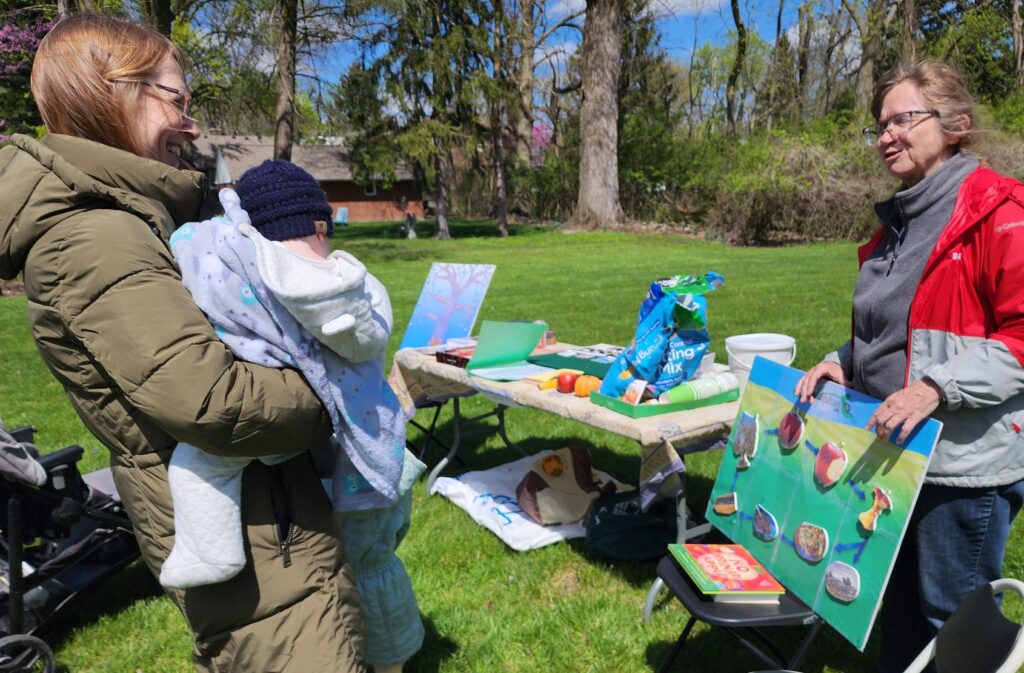
Earthy facts were shared about Bowling Green and Wood County:
- The city of Bowling Green maintains more than 9,500 street trees. A healthy and safe urban forest results in wildlife diversity, higher property values, better air and water quality, stormwater management, energy savings from summer and winter extremes, and quality of human health.
- The Wood County Solid Waste Management District is required to ensure 80% of county residents have access to recycling.
- There are more than 4,600 trees on the BGSU campus, according to the BGSU Office of Campus Sustainability.
- An estimated 20 or more pounds of food per person, per month, is thrown away in the U.S., according to the Center for Food and Culture.
- Research shows time outside in nature, paired with time inside reading about nature, cultivates a respectful and caring relationship between children and the environment, according to the BGSU English Department.
- Wood County Park District offers ways to “go green” and be a good steward to the earth at wcparks.org.
- Choosing fresh, local produce benefits both human health and the environment, according to the Wood County Health Department. The WIC program provides supplemental, nutritious foods to income eligible families.
- The Wood County District Public Library bookmobile allows readers to reduce and reuse. It is a fully functional library on wheels, ensuring library access within walking distance to neighborhoods, villages, schools, daycares, and senior living facilities.
- The Northwestern Water and Sewer District delivers six million gallons of clean, pure water, and treats more than 850,000 gallons of wastewater each day across the region.
- There are six species of frogs and toads that make Wintergarden Park their home – American toad, leopard frog, chorus frog, green frog, gray tree frog, and bullfrog.
- E-cigarettes not only pose health risks, but are also an environmental threat, according to My Life, My Quit. The free and confidential way to quit smoking or vaping can be contacted by texting “Start My Quit” to 36072.


